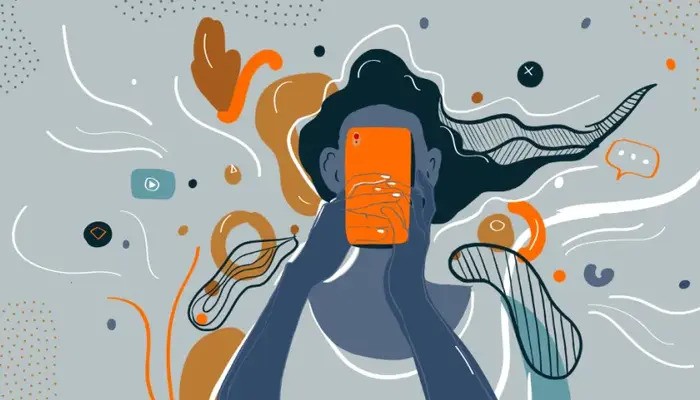In 2025, it’s hard to go even 10 minutes without checking a screen. From WhatsApp pings and endless TikTok scrolls to emails and YouTube rabbit holes, our lives are more connected — and more distracted — than ever.
While technology has made life easier in many ways, it’s also created a constant stream of noise that affects our sleep, focus, productivity, and even self-esteem.
The solution? You don’t need to delete everything and disappear. You just need a digital detox — even a small one — and a few mindful habits to use tech without letting it use you.
Why You Might Need a Digital Detox
Here are a few signs it’s time to reset your relationship with your devices:
-
You check your phone first thing in the morning and last thing at night
-
You open Instagram or YouTube without thinking
-
You get anxious when your phone isn’t around
-
You struggle to focus on tasks without checking notifications
-
You feel mentally tired even when you haven’t done much
Sound familiar? You’re not alone — but you’re also not stuck. Here’s how to take back control.
Step 1: Understand the Problem (Dopamine Overload)
Social media and phone apps are designed to be addictive. Every like, comment, or ping gives your brain a small dopamine hit — the “feel good” chemical.
Over time, your brain starts craving stimulation, even when you don’t need it. That’s why you:
-
Check your phone even when nothing is new
-
Feel bored quickly
-
Find it hard to sit still without a screen
A digital detox resets your brain’s baseline — helping you feel calmer, more focused, and happier.
Justice Shah Flags Constitutional Concerns Over IHC Judges’ Seniority Decision
Step 2: Start With a 24-Hour Mini Detox
You don’t need to disappear for a month. Start small with a 24-hour detox — one day away from optional apps and screens.
Rules:
-
No social media, YouTube, or entertainment apps
-
No mindless scrolling (use phone only for essential calls/messages)
-
No screens during meals or in bed
Use that time to reconnect with the offline world: reading, journaling, walking, cooking, calling a friend, or doing nothing at all.
You’ll be surprised how much time you actually have.
Step 3: Declutter Your Digital Space
Just like your room, your digital space needs cleaning.
Try these tips:
-
Turn off non-essential notifications (do you really need to know when someone liked your reel?)
-
Delete apps you haven’t used in 30+ days
-
Unfollow or mute accounts that drain your energy or time
-
Move addictive apps off your home screen
-
Use folders to organize and “hide” distractions
Result: fewer digital triggers = fewer distractions = more mental clarity.
Step 4: Set Digital Boundaries
Make your tech work for you, not against you.
Easy boundaries to try:
-
No phone 1 hour after waking and 1 hour before bed
-
Screen-free meals (talk, eat, or think instead!)
-
“No scroll” zones: bathroom, bed, or during work/study blocks
-
Use Focus or Do Not Disturb mode while working or resting
This gives your mind space to recharge — something screens never do.
Step 5: Replace, Don’t Just Remove
The biggest mistake people make is just “removing” screens without adding anything better.
When you cut screen time, fill the gap with activities that recharge you:
-
Reading
-
Meditating
-
Journaling
-
Walking
-
Playing music
-
Drawing
-
Cleaning or organizing
-
Doing nothing — yes, that’s okay too
Boredom isn’t bad. It’s where creativity lives.
Mindful Tech Use: How to Use It Without Letting It Use You
Let’s be real: tech isn’t evil. It’s how we use it that matters. Try these mindful habits:
Before opening an app, ask:
“Why am I opening this right now?”
If you’re bored, stressed, or avoiding something, pause and redirect.
Use your phone with purpose:
-
Set a 10-minute timer for social media
-
Only watch videos or scroll when you’re truly free
-
Use your home screen for intentional apps only (e.g., books, health, calendar)
Keep a “Digital Diary”:
Write down how much time you spent on screens today and how you felt afterward.
You’ll start noticing what’s worth keeping — and what’s draining you.
Digital Detox Ideas for Different Lifestyles
For students:
-
Use apps like StayFocusd or Forest while studying
-
Leave your phone in another room during classes
-
Replace YouTube breaks with music or quick walks
For employees:
-
No phone during meetings
-
Block social media during work hours
-
Have a real lunch break — not just scrolling time
For everyone:
-
Try a Screen-Free Sunday
-
Have a family “No Phone Dinner” rule
-
Read a physical book before bed instead of watching something
Final Thoughts: Less Screen, More Life
Digital detox isn’t about quitting your phone forever. It’s about taking your life off autopilot.
You’ll never regret spending more time:
-
With yourself
-
With people you love
-
Doing things that actually make you feel alive
Start small. Even 30 screen-free minutes a day can change your mindset — and your mood.
Follow us on Instagram, YouTube, Facebook, X and TikTok for latest updates
